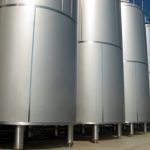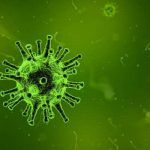The world is facing a plastic pollution crisis. Due to its well-engineered chemical composition, plastic can last over 2000 years before it decays [1]. We see compelling images of beaches in the Far East enveloped in plastics but what we don’t see is a smaller set of plastics.
Plastics are used in nearly everything from bottles, to computer chips, to chewing gum. However, recent studies have shown that plastic is ending up in places that we didn’t mean for it to be, nor do we want it to be.
What are Microplastics?
Microplastics are typically defined as smaller than 5mm long, and include microbeads, tire-shreds, and fibres (amongst other things). They can either be directly produced by us (primary) or result from the breaking down of larger plastics (secondary), but either way we are finding them everywhere.
The Scale:
In a recent study by Bangor University, it was found that microplastics exist in all of the lakes, reservoirs, and rivers that were looked at. ‘More than 1,000 small pieces of plastic per litre were found in the River Tame near Manchester, which was revealed last year as the most contaminated place yet tested worldwide’ [2].
That article from the Guardian continues to talk about how even some remote places, like the Falls of Dochart in Scotland, had a few pieces per litre. Moreover, microplastics have been found in soils and even the air, thus our bodies are constantly receiving them. This begs the question, what are the effects?
Consequences:
Since they reside in the water, they make their way into our foods. When animals eat them, and we eat the animals, they are transferred into our bodies.
The Plastic Pollution Coalition says that ‘Toxic chemicals leach out of plastic and are found in the blood and tissue of nearly all of us. Exposure to them is linked to cancers, birth defects, impaired immunity, endocrine disruption and other ailments.’ [3].
If one group of animals eats them, the whole food chain could feasibly be infested. Further testing is needed on the exact cycle of microplastic movement.
Alarming also is the way some microplastics integrate themselves into certain organisms, such as the example of the reef-building coral who ingest them and could lead to their self-destruction.
Responses:
In 2017, the UK put forward the Environmental Protection regulations specifically targeting Microbeads, which are a form of microplastic which appear in personal care products like shampoo. The US did the same thing under Obama.
This is only part of it, as microplastics come in many forms. Microplastics and larger plastics are part of the mission of company The Ocean Clean-up who are planning on using cutting edge tech to collect larger plastics from the ocean (which will remove micros too).
Conclusions:
Microplastics could cause complex medical issues due to the toxins in plastic itself. If we aren’t careful, more and more of these tiny killers could seep into our everyday lives and cause problems for the whole ecosystem. The way out of this is by further regulation on plastics, and then cleaning up what we’ve already left behind us.
References:
1. Carrington, D. 2019, “Microplastic pollution revealed ‘absolutely everywhere’ by new research”, The Guardian: https://www.theguardian.com/environment/2019/mar/07/microplastic-pollution-revealed-absolutely-everywhere-by-new-research, 23-06-19
2. DiGregorio, B, 2009, “Disposed plastic materials can remain in the environment for up to 2,000 years and longer..” Biobased Performance Bioplastic: Mirel,” Chemistry & Biology: https://www.sciencedirect.com/science/article/pii/S1074552109000076
3. The Plastic Pollution Coalition, https://www.plasticpollutioncoalition.org/the-movement, 23-06-19










